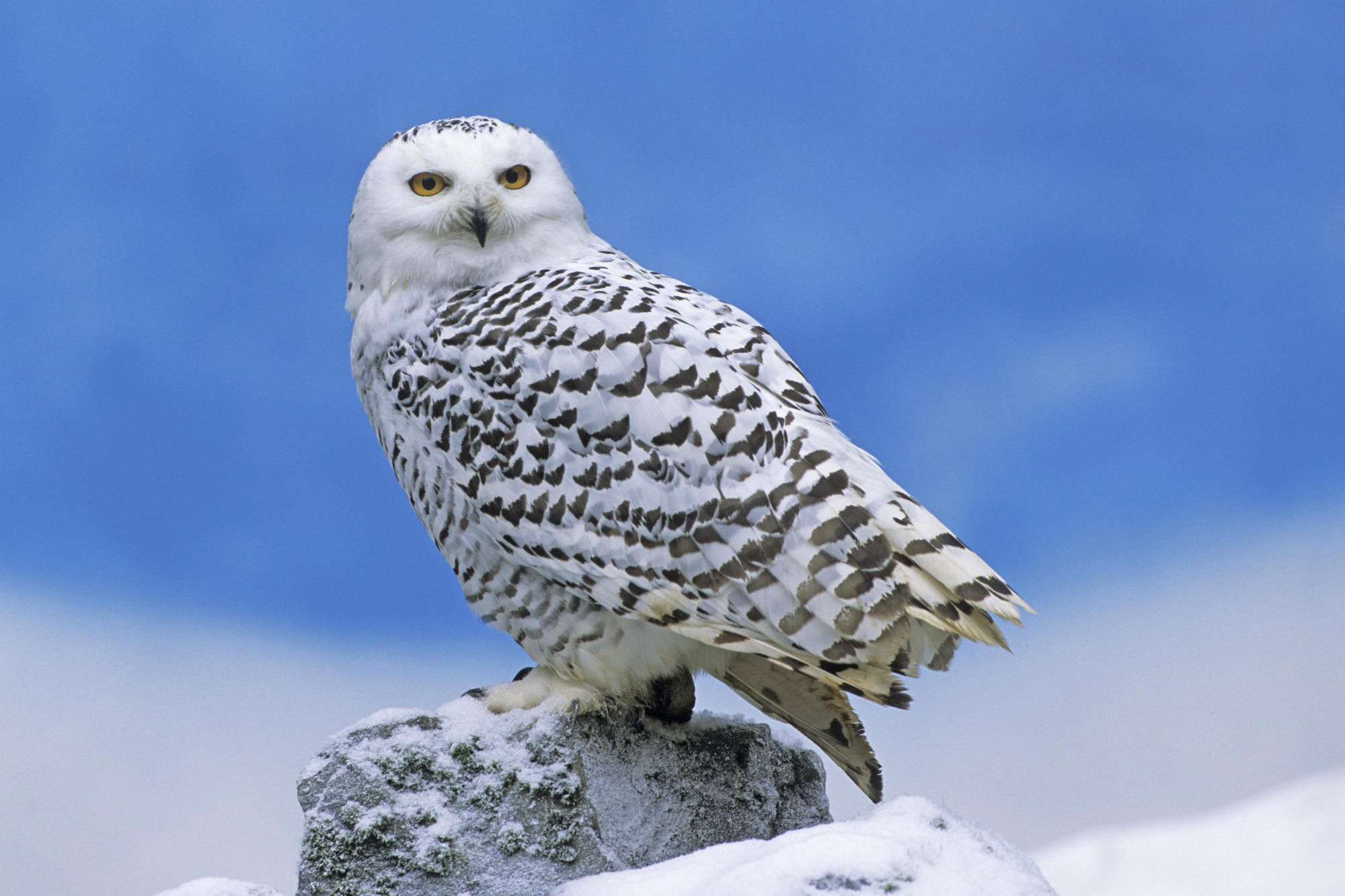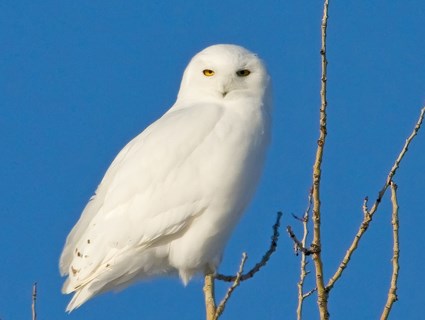
Nyctea scandiaca
SUBFAMILY
Striginae, Tribe Bubonini
TAXONOMY
Strix scandiaca Linnaeus, 1758, Lappland. Monotypic.
OTHER COMMON NAMES
English: Snow owl; French: Harfang des neiges; German
Schnee-Eule; Spansih: Bъho Nival.
PHYSICAL CHARACTERISTICS
21.7–27.6 in (55–70 cm). Female, 1.7–6.5 lb (780–2,950 g).
Male, 1.5–5.5 lb (700–2,500 g). Heavy-bodied white owl with a
large head, no ear tufts, yellow eyes, and a blackish beak nearly
concealed by feathers. Males may have sparse gray or brown
spots and bars. Females have more prominent dark barring,
both above and below. Legs and feet are feathered.
DISTRIBUTION
Arctic Circle.
HABITAT
Open, treeless tundra and moorlands.
BEHAVIOR
Migratory and nomadic; movements probably due to fluctuations
in prey populations. It is most active at dawn and dusk;
forages during the day in summer.
FEEDING ECOLOGY AND DIET
Lemmings and voles form the bulk of its diet, however, it also
preys on birds (up to size of ptarmigan), mammals (up to the
size of snowshoe hares), and fish. Hunts from a perch; usually
captures prey on the ground after a low, gliding flight from the
perch.
REPRODUCTIVE BIOLOGY
A ground nesting species that lays later in the year as spring
comes later. Clutch size normally is three to five eggs, but up
to 11 eggs may be laid in a year when vole or lemming populations
are high. Incubation is 31–33 days. Young leave the nest
at 20–28 days, but do not fly well until about 50 days.
CONSERVATION STATUS
Not globally threatened. Status of North American populations
appears stable, but European populations may be declining.
SIGNIFICANCE TO HUMANS
None known.
Other popular Animals
Photo Gallery of - Snowy owl




 Animalia Life
Animalia Life